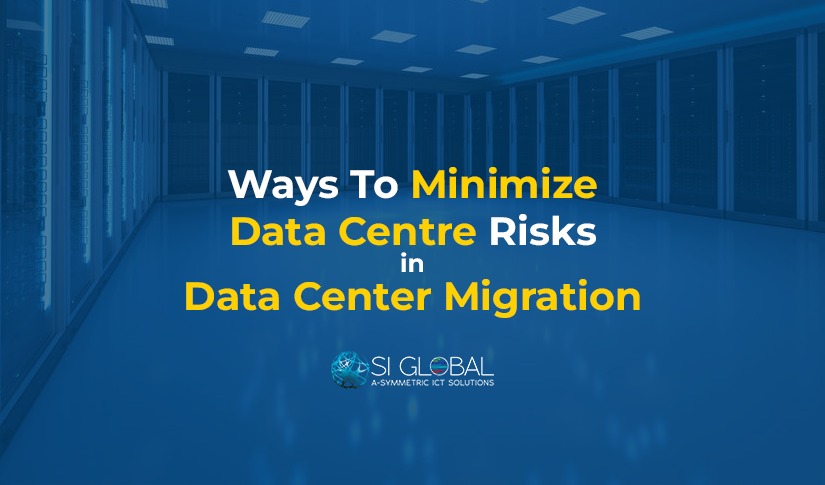Organizations are most vulnerable to data center migration. Data center migration is one of the most important and complex IT migrations today. Migrations are often expensive and time-consuming, so it’s important to hire a professional migration service provider. Analyzing the risks of data center migration is critical to success. Let’s talk about the risks involved in data migration.
Before we can understand the risks associated with Data Centre migration; one must understand why they’re crucial and necessary and we; being one of the leading Data center solutions Providers in Dubai and the Middle East have compiled a list of the benefits of Data Centre Migration.
Why Data Centre Migration Is Crucial
Technology has grown and evolved as the need for data storage has grown. This is where data centre migration can be considered. For many, the idea of a data centre migration is daunting, fraught with pitfalls and high costs. However, the benefits of a well-planned data centre migration can far outweigh the potential problems. Some of our best data center consultants in Dubai and the middle east have listed some of the risks associated with Data Centre migration.
Cost Reduction
While we were initially concerned about the costs associated with data centre migration, this process could result in long-term cost savings for businesses and organizations. Data centres are expensive for any business. Equipment maintenance, trained staff, rent, and utilities are just a few of the costs associated with data centres. Significant savings can be made just by lowering your electricity bill, and data centres use on average 100 times more energy than similarly sized office buildings.
Improved Security
Migrating your data to a modern system is the easiest way to stay secure. Moving data to physical or cloud-based refreshed or modernized data centres ensures the latest security measures are in place.
Data protection is essential. Data centre migration provides an opportunity to evaluate your current data centre security protocols and procedures. Finding the weaknesses and strengths of your current security is the first step in preventing security breaches and intrusions.
Improved Efficiency
Data explosion can be quite a problem. As your business grows faster than your data storage capacity, processes can become more complex and temporary solutions less efficient. Consolidation and migration require planning and process assessment. A data centre migration allows a company or enterprise to assess its IT systems, requirements and processes. In this way, inefficiencies previously overlooked or deemed too complicated to fix can be removed.
Potential energy savings are beneficial in two ways. Reducing energy consumption is good for business as well as the environment. The federal data centre consolidation and optimization initiative want to promote the use of green IT through its own changes. Keeping this in mind while migrating your data centre gives you a great opportunity to review your energy consumption and areas where you can cut back. Staying one step ahead of green IT trends can also help with potential future mandate situations, with the added benefit of reducing organizational/company costs.
The Risks associated with Data Centre Migration
However, with its numerous benefits, there are a number of risks associated with Data Centre migrations that one must take into account before going through with the process
1. Risk Of Data Loss
Data loss may occur during the data migration process. Some data may not be migrated from the source system to the new or target system. You can avoid this risk by performing a data migration test.
The data migration process, even if executed efficiently, can lead to semantic errors. If you have a field called Monthly Average in your source data, you can migrate the information in that field to another field in your target system. Data inconsistencies can cause many problems for companies wishing to migrate data to new environments. Therefore, if you are migrating a large amount of business information, we highly recommend performing a data migration test.
Downtime can increase if the data migration process takes longer than expected. Not having an active source system can put your organization and stakeholders at risk during the migration process
2. Ineffective Planning And Rehearsals
Without the ability to effectively plan and rehearse changes, data centre migrations are jeopardized before they even begin. Doing this manually using spreadsheets, phone calls, and emails is difficult and time-consuming. Even when planning is complete, it may not provide the necessary visualization to identify problems and avoid risks such as outages and rollbacks.
The technology and processes used to plan and rehearse events should provide insight into each part of the change process involving both human and technical elements. Being able to see all of these moving parts allows for more detailed planning and rehearsals. The ability to anticipate potential problems minimizes risk, and realistic rehearsals ensure teams are as prepared as possible.
3. Lack Of Understanding Of Progress
Without real-time visibility into change data, it can be difficult to fully understand the progress of the migration itself. When managing data centre migrations using spreadsheets, phone calls, and email, the time it takes to compile and submit status reports can often result in out-of-date status reports at a given point in time. Without up-to-date information, many threats arise when trying to make fact-based decisions to move forward safely.
Similarly, data quality must be detailed enough to allow the right decisions to be made at the right time. Where exactly is the delay occurring? where is the risk? Where do you need extra attention? You need good data to answer these questions quickly and accurately and take informed action.
4. Slow Communication Process
Valuable time is wasted when various teams have to spend time manually updating other teams’ progress. By streamlining the communication process, these employees will be able to focus on the migration effort itself, making the overall progress more efficient.
With this streamlining in place and everyone working together in one place, from fieldworkers to stakeholders to senior management can stay on the same page in real-time. Not only will communication be quicker and easier, but it will be organized in a way that fosters collaboration and supports decision-making.
Conclusion
To sum up, Data Centre Migration carries a lot of opportunities but also carries risks associated with it and both should be carefully examined before making any final decision. To find out more and get in touch with our data center experts in Dubai; contact us via info@sigbl.com
Also Read: Threats From The Environment To Data Centers


